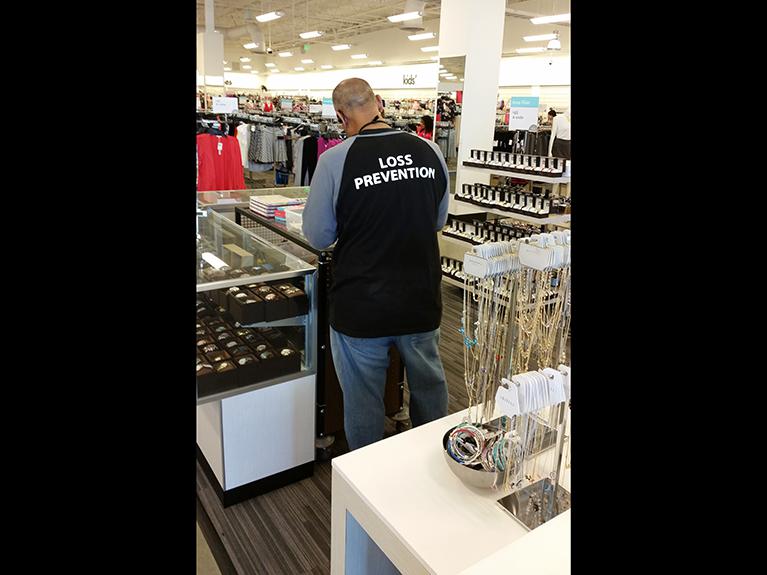The Mobile Side of Retail Loss Prevention

July 28th, 2016 -Today, retail loss prevention’s focus has grown from preventing the loss of inventory within a retailer’s stores to a variety of other activities ranging from HR challenges, crisis management, emergency situations and disaster recovery. However, the process for communicating emergency preparedness procedures with employees has remained stagnant. This could result in a tremendous loss in operations and profit for retailers. With brick-and-mortar retailers fighting for every dollar against growing online and mobile sales, empowering employees at each store location to protect assets has now reached a critical level.
Working with associations like the National Retail Federation, which recently addressed these issues at their loss prevention event NRF Protect, most retailers build robust loss prevention, risk mitigation, and emergency preparedness plans.


While corporate management makes a concerted effort to distribute these guidelines to each store manager, nine times out of ten, these plans are extensive paper-based manuals, posters, flip books, building diagrams, and websites that are too cumbersome to access quickly. Even worse, they are often lost or filed away in a drawer and not available when an issue arises.
Smartphones yields greater access to loss prevention tools
The technology for communicating emergency processes and procedures is evolving. Retailers are spending more money and time on mobile apps for their workforce to increase productivity and sales, since virtually every employee brings their own device to work. Mobile technology provides retail and loss prevention professionals a way to dynamically update plans and turn them into digital playbooks, ensuring employees have real-time access to the most current procedures.
The resilience of each store is based on the preparedness of their employees, resources and an efficient recovery process. Mobile emergency preparedness solutions can even be developed and tailored for specific store and shopping center-level protocol as well as corporate-level best practices.
One major U.S. retailer of sports clothing and accessories is using in-store iPads to communicate emergency response scenarios to their employees. From a power outage to flooding to a store lockdown, employees can retrieve step-by-step playbooks for handling any issue via a mobile app on the iPad. They can also receive push notifications with instructions from the retailer’s headquarters, e.g., evacuate, and file detailed incident reports, including in-store images and videos, on the app following an event.
From a liability and reporting standpoint, advanced incident reporting capabilities have a huge impact on the profitability of the retailers’ bottom line because this capability streamlines work responsibilities and increases the feeling of empowerment of each of the store level employees.
For several retailers that have deployed mobile safety management solutions, corporate loss prevention and risk management departments are no longer seeing the volume of calls to loss prevention and risk management departments. Managers and their employees handle these issues at the store level. Additionally, retailers can use mobile crisis apps to prepare employees working in their warehouses and distribution centers with important emergency preparedness and workplace safety guidelines.
Empowering employees to take action
It’s a simple fact that empowered employees are more efficient, reliable and long-term employees. This doesn’t just apply to specific job training for each employee’s profession and skill level. Employee empowerment also tackles issues that range from day-to-day HR and workplace challenges, such as making it safely to a retail location during inclement weather or handling a conflict with a co-worker to managing a major theft or a violent incident within the store. If an employee doesn’t feel safe, or they feel at risk, they are less likely to be motivated to show up to work.
Loss prevention mobile solutions that offer detailed plans on navigating various workplace scenarios prepare retail employees for common day-to-day or crisis-related incidents. Increased preparation and more accessible mobile resources help lower the length of business interruptions that can take place.
As an example, a retailer within a shopping mall dealing with inclement weather can easily push out notifications to employees on their mobile devices providing them the status of the store and mall opening and closing times, as well as procedures that both entities have taken to ensure employees are safe to come in. Taking this a step further, a corporate or a regional retailer manager can provide a communication mechanism by which employees can report if they are able to make it to work and, if so, which shift. Also, employees can report back to corporate and store level locations via incident reporting on conditions of streets, lost power, etc. This level of detail gives retailers the ability to shorten the window of interruption of service or minimize staffing issues, which maximizes the store’s ability to operate and maintain the business.
With the development, publication and communication of specific emergency preparedness plans through a secure mobile application, retailers can properly and proactively prepare their employees for day-to-day issues or emergencies. They can also more easily notify corporate loss prevention management and first responders with actionable plans to better support their safety, risk management and business continuity efforts and minimize impact to store operations.
Originally Posted on Chain Store Age



